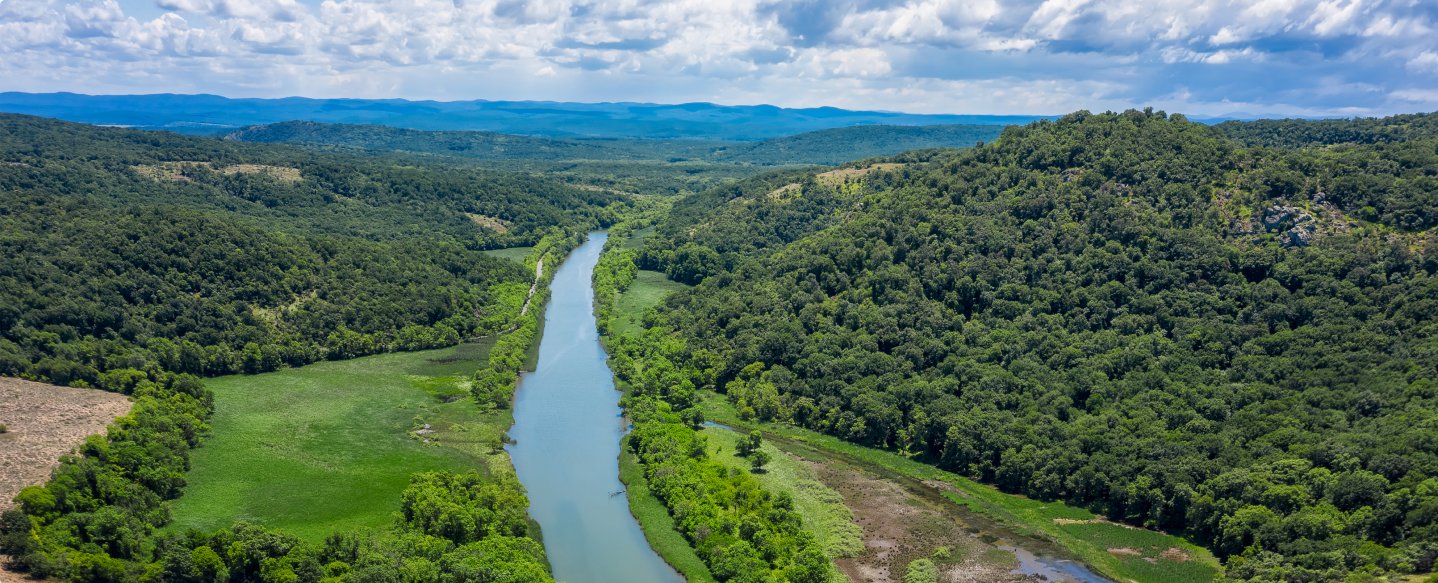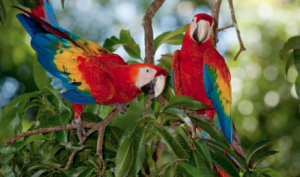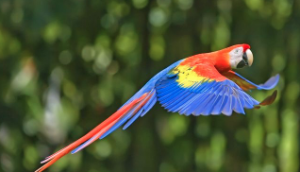Embark on a journey through Barcelona's captivating art and architecture. Explore the visionary works of Gaudí, Picasso, and more, set against the city's stunning landscapes.
GVI
Posted: July 5, 2024

Posted: December 5, 2020
Scarlet Macaws are breathtaking multicoloured parrots that can be seen on a daily basis here at Quepos. These large birds flood the skies with their bright red bodies and loud squarks, making them impossible to miss.
Scarlet Macaws act as key seed dispersers for the tree species they feed on, with their favourite being the almond trees that are native to the area.  You’ll often hear them flying through town with the sun rise at 6am daily. Making a racket as they swoop in for their breakfast on one of the almond trees found in town. Very chatty by nature, you’ll hear them squawking to each other all day long. It’s rare to find one by itself, as these very social birds are often seen flying in pairs or even in groups of 8 or 10. Often all hanging out together if they find a particularly good almond tree to snack on!
You’ll often hear them flying through town with the sun rise at 6am daily. Making a racket as they swoop in for their breakfast on one of the almond trees found in town. Very chatty by nature, you’ll hear them squawking to each other all day long. It’s rare to find one by itself, as these very social birds are often seen flying in pairs or even in groups of 8 or 10. Often all hanging out together if they find a particularly good almond tree to snack on!
Unfortunately, due to their beautiful colouration these birds have been prime targets for the pet trade and are now considered endangered in Costa Rica. Living for up to 60 years and mating for life are other factors that have contributed to their populations declining, as mated pairs will typically only raise one chick at a time.  Habitat loss and a lack of connectivity has also contributed to their decline. Scarlet Macaws, while still found throughout the Pacific coast of Costa Rica were thought to be extinct on the Carribean Coast up until recently. Within the last 5 years, a pair has been spotted frequently in Tortuguero so hopefully this is an indicator that this species is returning to the area.
Habitat loss and a lack of connectivity has also contributed to their decline. Scarlet Macaws, while still found throughout the Pacific coast of Costa Rica were thought to be extinct on the Carribean Coast up until recently. Within the last 5 years, a pair has been spotted frequently in Tortuguero so hopefully this is an indicator that this species is returning to the area.
There is hope for these birds, as many organisations within Costa Rica are fighting to protect their habitat and increase their numbers through captive breeding. One such organization can be found right here in Quepos known as Asomacaw. The owner of this organisation, Ana Maria, works tirelessly to breed and release Scarlet Macaws back into their local habitat near Quepos. She releases adult birds into the area and monitors their progress over time. With monitoring of these birds, she can better understand how well they are doing in the area and can keep track of their breeding success and population recovery. We are lucky enough here at Quepos to be able to help Asomacaw when they need it, as their work is so important to help protect these beautiful birds. Because of organisations such as Asomacaw, Scarlet Macaws can still be seen in Quepos and the surrounding areas today and we could not be more grateful for all the important work they do!
Embark on a journey through Barcelona's captivating art and architecture. Explore the visionary works of Gaudí, Picasso, and more, set against the city's stunning landscapes.
GVI
Posted: July 5, 2024